I need help with a project. I want to make a circuit to work as a night-time motion detector circuit that will power several LEDs. I bought:
- 1 LDR
- some NPN transistors BC547 and 2N3904
- some resistors 100kOhm
- boost regulator 3V to 5V
- PIR sensor
I connected the LDR to 2 NPN BC547 transistors and successfully tested it. Then I connected the (-) from NPN transistor to the (-) of the PIR and the (+) of the PIR to (+) and the output of the PIR to a single led. It worked but the LED had a low output.
If I connect the PIR output to a 2N3904 transistor and after to the LED, the LED is brighter. But when I connect the current to the voltage booster and to all LEDs, the light is very low.
The problem is the 3.3V from the PIR output. I need 5V to work my LEDs. How can I establish this?
Update: This is my PIR Sensor (mod edit: Pretty much a standard BISS0001 Design, no transistor on the output.)

My Power Supply Is 2 Batteries 3.7V 18650


